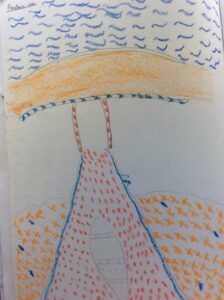Intent
Our art curriculum is designed to offer all of our pupils a high-quality art education, which inspires them to develop creativity, self-expression and confidence. Our curriculum is designed to equip pupils with a range of artistic skills and contextual knowledge, which will enable them to create their unique pieces of art. Many of which are inspired by influential and famous artists, including artists local to Yorkshire. We aim to widen their cultural experiences and develop their appreciation of diversity within the arts. At Beech Hill, we hope to inspire children and allow them to realise that a career within art is achievable.
Our art curriculum is organised into three key components that we feel will support our pupils in building and deepening their knowledge throughout their school life and make the learning stick. The three main components are the art of drawing and painting, printing and sculpture. Children will explore and create with many different mediums to extend this knowledge, such as mixed media, collage, 3D forms, and digital art. Opportunities are provided frequently to celebrate the children’s artistic achievements to enable them to grow in confidence throughout their school life. When pupils leave us, we aim to have formed a strong foundation of art skills though a range of different tools, skills and knowledge, which they will build upon as they become young artists their own right.
Implementation
The teaching of Art and Design begins in the Early Years where children develop a good foundation of core artistic skills through a mixture of child initiated and adult directed activities linked to our main components. Children are given the opportunity to explore materials and techniques. They safely use and explore a variety of materials, tools and techniques, experimenting with colour, design, texture, form and function. Children begin to be exposed to the study of artists and the study of key works of art. Children begin to use language of art and design to share their creations and explain the processes they have used. Towards the end of Reception, children are introduced to sketch books. This is a place for them to explore and prepare them for year 1.
In KS1, children continue to use sketchbooks. Sketchbooks are a safe place to explore and practice without fear of making mistakes. All classes have a class sketch book. A place for the teachers and support staff can be artists and explore too. This is opportunity to model techniques for pupils also. Children are taught sketchbooks are a work of art and they begin to use these to record progress and ideas. In KS1, children build on their learning from EYFS, refining their key kills with a more structured approach. Children develop a wide range of art and design techniques. They learn about colour, pattern, texture, line, shape, form and space and they use a range of materials creatively to design and make their own works of art. Children dive deeper into contextual knowledge through artist studies and they are the given opportunity to think like an artist to create their own unique creations. Children learn about the work of a range of artists and craft-makers, describing the differences and similarities between different artists, styles and disciplines. Children are encouraged to think like an artist by making links and comparisons to key works of art and their own.
In KS2, pupils continue to develop their use of sketchbooks to record their observations. They use them to review and revisit ideas, enabling them to re-cap prior learning. Children begin to use sketchbooks more freely to expressively present their thinking. We encourage pupils to take ownership of their sketchbooks. In KS2, children improve their mastery of art and design techniques with a range of materials. They dive even further into their contextual studies to learn about great artists, architects and designers in history which act as stimulus for their own creative ideas.
The planning of the art curriculum began with the EYFS Framework and National Curriculum. A comprehensive progression map has been created and developed over time, which considers pupil voice and the context and needs of our children. We work alongside our Artist in Residence who has a wealth of knowledge and skills to assist pupils, as well as teachers. Each year group follow the long-term plan, whereby they will study a different key component of art during each term. Our Artist in Residence teaches a different year group every half term. Teachers use and follow medium term plans to ensure they know what to teach and when. The medium-term plans contain the three types of knowledge in art, prior knowledge and progression, vocabulary, key learning points and questions. They also include formative assessment opportunities through questioning.
Inclusion
Art and design is inclusive. All pupils are given the opportunity to go on the same creative journey regardless of ability or access. We aim to develop cultural capital through school trips, workshops and visitors.
Art and design is creative and can boost self-esteem, give learners the agency to develop and communicate their ideas, observations. Art and design connects learners to the wider world in ways that other subject areas may not.
KS1
Key Stage 1 builds upon what was learnt in EYFS with further opportunities given to develop fine motor skills, experiment with a broader range of media and become more independent artists. There should be regular opportunities for learners to practise their fine motor skills as well as regular opportunities to experiment, for example mixing primary colours. Practical activities should be accompanied by visual resources including videos, photos or examples of artwork. Additionally, any new vocabulary should be introduced, displayed and used in context by adults regularly. Equipment should be broad-based, so that all can access the lesson. Independence should be nurtured.
KS2
Key Stage 2 builds upon and expands learners’ knowledge of art and design, providing them further opportunities to learn the subject. All learners benefit from being taught and modelled how to use a sketchbook, including annotations, sketches, collages, mock-up and final outcomes. The contextual side of art is expanded upon to include architects in the range of artists and designers. Learners will start to develop an appreciation of artists and designers as they look at similar and different ways artists have worked across time and contexts. Learners will continue to experiment and revisit art and design techniques and methods to improve their mastery allowing them to be confident with their experimentation and expression of ideas.
When planning, teachers must consider how to make the goals in art accessible and inclusive for individual learners. Potential barriers should be anticipated and ways to overcome these should be identified. Teachers should consider the factors such as the use of equipment, the environment, gaps in knowledge, skills and vocabulary and any literacy difficulties. It Is a balance of adult support whilst promoting independent learning.
Long Term Plan and Overview
Art Progression
Colour Mixing Progression
Whole School Artist & Stimulus Overview
Medium Term Planning for Art and Design
The Arts Sample Must Knows
Below, are a selection of the Must Knows that we provide for each year group, for art and design and music. These Must Knows are designed to be used at home by parents as part of homework and revision, in school to supplement work in lessons and to recap previous learning. We want every pupil to be able to recall the facts given on the sheet but also to research further into the information provided. These are carefully structured so that knowledge and vocabulary are sequenced and built upon over time. We are confident that these Must Knows will help our children to develop and retain key knowledge and significantly improve their vocabulary.
The full range of art and design and music Must Knows can be found on each class’ Seesaw account
Sample Must Knows – Year 1
Sample Must Knows – Year 2
Sample Must Knows – Year 3
Sample Must Knows – Year 6
Cultural Capital in the Arts
‘It is the essential knowledge that pupils need to be educated citizens, introducing them to the best that has been thought and said and helping to engender an appreciation of human creativity and achievement.’
Ofsted School Inspection Handbook 2019
Cultural Capital at Beech Hill is something we are passionate about throughout all subjects. The Arts lends itself well to developing cultural capital. We are excited about developing our pupils’ appreciation of human creativity and achievement.
We celebrate British and International Artists throughout the year for our pupils to gain a wider appreciation of different styles of art ensuring that a mixture of female and male artists are included. The children also experience a wide range of composers and genres of music through listening and appraising opportunities. Opportunities are built into our curriculum to visit local art galleries such as the Lowry, Salts Mill to see David Hockney’s artwork and the Yorkshire Sculpture Park to explore some of Henry Moore’s sculptures add to the children’s cultural development.
Carefully sequenced vocabulary ensures that our children move up through our school with a vocabulary basis that can be applied to different styles of art and genres of music.
Artist in Residence
Tony Bullock – Visual Artist/Art Teacher
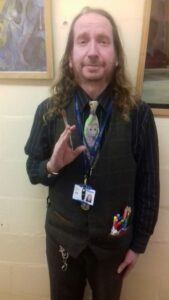
I have worked at Beech Hill since 2014 , first doing one off art days now I am happy to say I come every Tuesday and work with the young artists of every year group in Key Stage 1 and 2. I trained to be a teacher in Leeds in the 1990s and have taught for over 20 years around Yorkshire . 14 years ago, I started the job I have now Visual Arts Co-ordinator
In this job, I teach lots of young artist across the district on one off art days and weekly lessons in lots of artistic areas on lots of themes. I have always loved art from my first ever memories and now I am lucky enough to do it as a job and meet lots of great artists like you!
Art work with Mr Bullock – Year 6
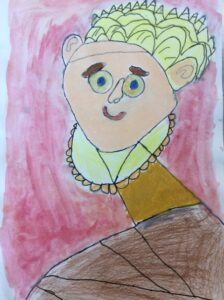


Art work across school
Year 2
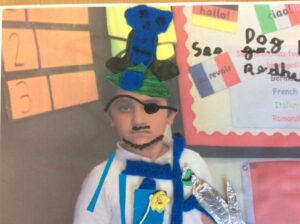
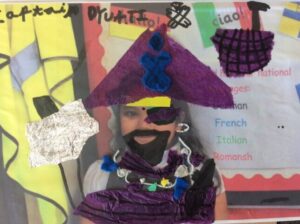
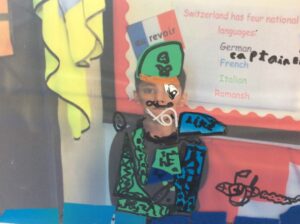
Year 3

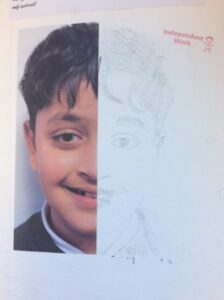
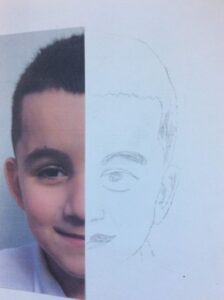
Year 5


